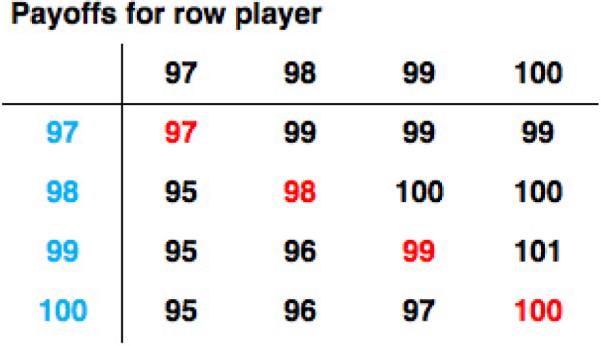Figure 1.

A partial payoff matrix for the Traveler's Dilemma when R = 2 and the maximum claim M = 100. Payoffs are shown for the row player (blue). When the travelers claim the same value, they are both awarded that amount (red). But if one traveler claims a value L and the other a value H > L, then the former receives L + R and the latter receives L – R. For example, if the row player claims 98 and the column player 99, the row player gets 98 + R = 100 and the column player 98 – R = 96.
